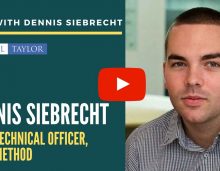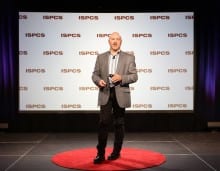RI Seminar: Jonathan Hurst : Designing Robots to Walk and Run
Jonathan Hurst
College of Engineering Deans Professor, Oregon State University
April 01, 2016
Abstract
Legged locomotion is a challenging physical interaction task: underactuation, unexpected impacts, and large and rapidly changing forces and velocities are commonplace. Utilizing passive hardware dynamics in tight integration with the software control, with both aspects of “behavior design” considered together as part of the overall design process, can drastically improve the performance of a machine as measured by efficiency, agility, and robustness to disturbances.
This design philosophy was recently demonstrated on ATRIAS, a bipedal spring-mass robot. The passive dynamics of the hardware match a simple biomechanically-derived spring-mass model, while the software control relies on the passive dynamics as an integrated aspect of the system behavior. ATRIAS walks using approximately 400W of power, accelerates to a run, handles large unexpected obstacles with no prior knowledge of the terrain, and is the first machine to reproduce the dynamics of a human walking gait. In this presentation, we explain our design philosophy, results with ATRIAS, current work on a successor robot Cassie, and plans for commercialization of this technology by Agility Robotics.
Speaker Biography
Jonathan W. Hurst is the College of Engineering Dean’s Professor of Robotics in the School of Mechanical, Industrial, and Manufacturing Engineering at Oregon State University, and the co-founder and Chief Technology Officer of Agility Robotics. He holds a B.S. in Mechanical Engineering, and both an M.S. and Ph.D. in Robotics, all from Carnegie Mellon University. His university research focuses on understanding the fundamental science and engineering best practices for legged locomotion. Investigations range from numerical studies and analysis of animal data, to simulation studies of theoretical models, to designing, constructing, and experimenting with legged robots for walking and running.
source

